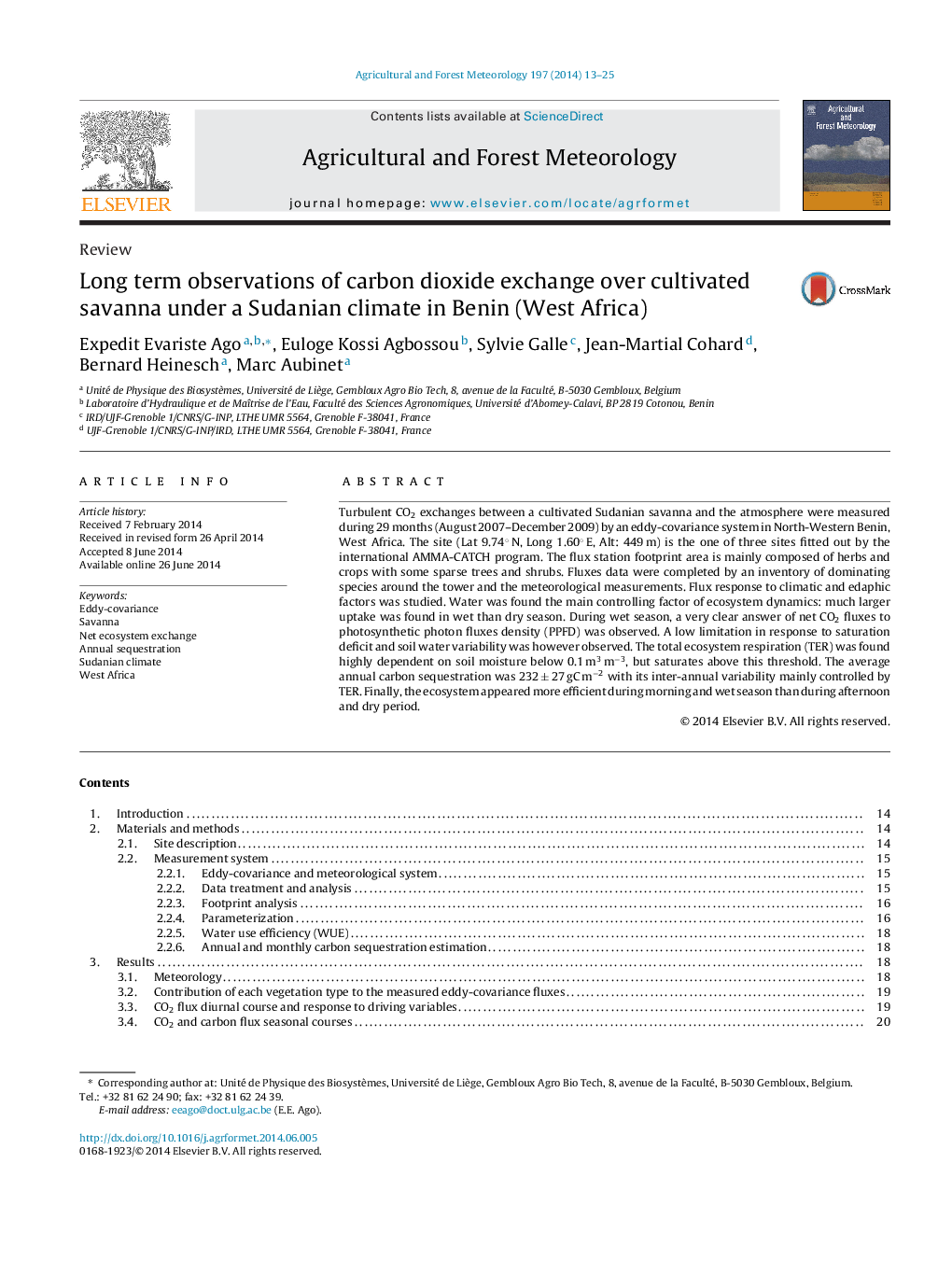| کد مقاله | کد نشریه | سال انتشار | مقاله انگلیسی | نسخه تمام متن |
|---|---|---|---|---|
| 81700 | 158332 | 2014 | 13 صفحه PDF | دانلود رایگان |
• Eddy-covariance measurements were made above savanna during 29 months.
• Moisture was found the main controlling factor of all ecosystem's dynamic.
• TER was mainly driven by the soil moisture, but insensitive to temperature.
• Site was annually a C sink of 232 ± 27 gC m−2, more efficient during wet season.
Turbulent CO2 exchanges between a cultivated Sudanian savanna and the atmosphere were measured during 29 months (August 2007–December 2009) by an eddy-covariance system in North-Western Benin, West Africa. The site (Lat 9.74° N, Long 1.60° E, Alt: 449 m) is the one of three sites fitted out by the international AMMA-CATCH program. The flux station footprint area is mainly composed of herbs and crops with some sparse trees and shrubs. Fluxes data were completed by an inventory of dominating species around the tower and the meteorological measurements. Flux response to climatic and edaphic factors was studied. Water was found the main controlling factor of ecosystem dynamics: much larger uptake was found in wet than dry season. During wet season, a very clear answer of net CO2 fluxes to photosynthetic photon fluxes density (PPFD) was observed. A low limitation in response to saturation deficit and soil water variability was however observed. The total ecosystem respiration (TER) was found highly dependent on soil moisture below 0.1 m3 m−3, but saturates above this threshold. The average annual carbon sequestration was 232 ± 27 gC m−2 with its inter-annual variability mainly controlled by TER. Finally, the ecosystem appeared more efficient during morning and wet season than during afternoon and dry period.
Journal: Agricultural and Forest Meteorology - Volume 197, 15 October 2014, Pages 13–25
